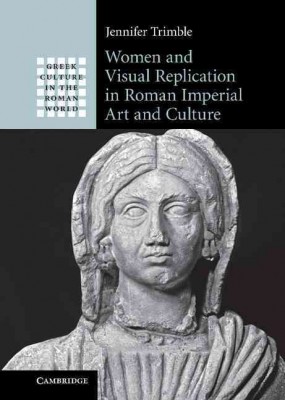| Women and Visual Replication in Roman Imperial Art and Culture Contributor(s): Trimble, Jennifer (Author) |
|
 |
ISBN: 0521825156 ISBN-13: 9780521825153 Publisher: Cambridge University Press OUR PRICE: $140.60 Product Type: Hardcover - Other Formats Published: September 2011 |
| Additional Information |
| BISAC Categories: - Art | History - Ancient & Classical - Art | Sculpture & Installation |
| Dewey: 733.5 |
| LCCN: 2011019854 |
| Series: Greek Culture in the Roman World |
| Physical Information: 1.2" H x 6.8" W x 9.8" (2.47 lbs) 500 pages |
| Themes: - Chronological Period - Ancient (To 499 A.D.) |
| Descriptions, Reviews, Etc. |
| Publisher Description: Why did Roman portrait statues, famed for their individuality, repeatedly employ the same body forms? The complex issue of the Roman copying of Greek 'originals' has so far been studied primarily from a formal and aesthetic viewpoint. Jennifer Trimble takes a broader perspective, considering archaeological, social historical and economic factors, and examines how these statues were made, bought and seen. To understand how Roman visual replication worked, Trimble focuses on the 'Large Herculaneum Woman' statue type, a draped female body particularly common in the second century CE and surviving in about two hundred examples, to assess how sameness helped to communicate a woman's social identity. She demonstrates how visual replication in the Roman Empire thus emerged as a means of constructing social power and articulating dynamic tensions between empire and individual localities. |
Contributor Bio(s): Trimble, Jennifer: - Jennifer Trimble is Associate Professor of Classics at Stanford University, California. In her research and teaching, she explores the visual and material culture of the Roman Empire, with particular interests in portraits and visual replication, cultural interactions, spatial analysis and the city of Rome. With Jas Elsner, she co-edited Art and Replication: Greece, Rome and Beyond (Art History 29.2 (2006)). She has excavated in Turkey, Tunisia, Germany, France and Italy, and is co-director of the IRC-Oxford-Stanford excavations in the Roman Forum, which investigate the interactions of commercial, religious and monumental space. She co-directed Stanford's Digital Forma Urbis Romae Project, a collaboration between computer scientists and archaeologists focused on the reconstruction and study of the Severan Marble Plan of Rome. She has also held a Rome Prize at the American Academy in Rome and has been Director of the Stanford Archaeology Center. |